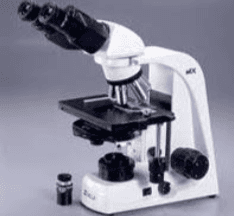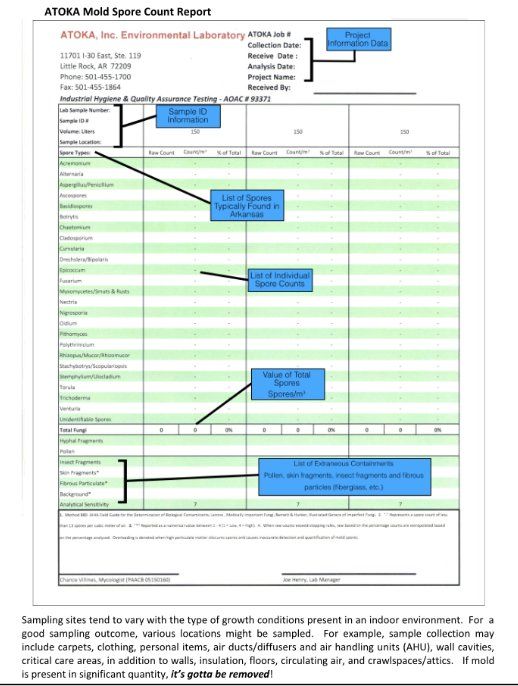
Hot Springs, AR 71913
Little Rock, AR 72209
Engineering & Environmental Consulting in Arkansas
Environmental & Food Safety Laboratory
SPORE TRAP AND BIOTAPE ANALYSIS / PARTICLE IDENTIFICATION

The significance of examining air and surface samples for mold spores is to offer reliable insights to the inspector, aiding in uncovering the narrative of indoor air quality concerns within the investigated premises.
ATOKA offers Spore Trap and Biotape analyses at its Little Rock facility.
ATOKA clients have the option to send their samples to the Little Rock laboratory located at 11701 Interstate 30 – Building 1, Suite 119 – Little Rock, AR 72209. To streamline the process, a downloadable chain-of-custody form can be accessed on the website. Just click on Lab Services in the menu and navigate to Lab Forms to download and print the form.
Laboratory Reports can be submitted via email or traditional mail, and if desired, both options are at your disposal. Depending on your requirements, you have the flexibility to select from various turnaround times. Indicate your preference on the chain-of-custody and your report will be delivered accordingly. The Spore Trap Analysis report, displayed in an easily comprehensible layout on the reverse side, provides a comprehensive overview of all spore types identified in the sample, along with a detailed breakdown of quantities and percentages corresponding to each spore type.ATOKA takes pride in its precise identification and counting of mold spores. Our internal quality assurance procedures ensure accuracy and consistency.
Data Interpretation
Spore-bearing structures are identified, providing a more detailed insight into the level of environmental contamination. These structures manifest in different forms.
Hyphomycetes (The Imperfect Fungi) are common indoor contaminants, including fungi such as Aspergillus, Penicillium, and Stachybotrys. Spores are generated on conidiophores.
Ascomycetes (Sac Fungi) produce spores from ascocarps (sac-like structures bearing 4-8 spores). Examples include Chaetomium, Petriella, Ascotricha, among others.
Pycnidia (Asexual fruiting body, often spherical or pear-shaped) contain spores lining the cavity. When detected in air samples, it serves as the sole indicator of its presence.
Basidiomycetes (Mushroom Fungi) produce spores from a basidia; hyphae with clamp connections are observable in the air.
